Let’s be honest: the whole city of Rome is basically one big open-air museum.
You’ve got the Colosseum right next to the crumbling-yet-magnificent ruins of the Roman Forum, the Spanish steps adjacent to Trevi Fountain… and even a literal pyramid from Egypt in the middle of a traffic circle.
Plus, all these incredible Rome landmarks all available to admire for free!
To really dive into Rome’s excellent art scene, you’ve got to visit the Borghese Gallery, showcasing art from the 15th through 18th centuries.
Located in the lush Villa Borghese park, the green lungs of Rome, the Borghese Gallery is one of the Italian capital’s most iconic landmarks.
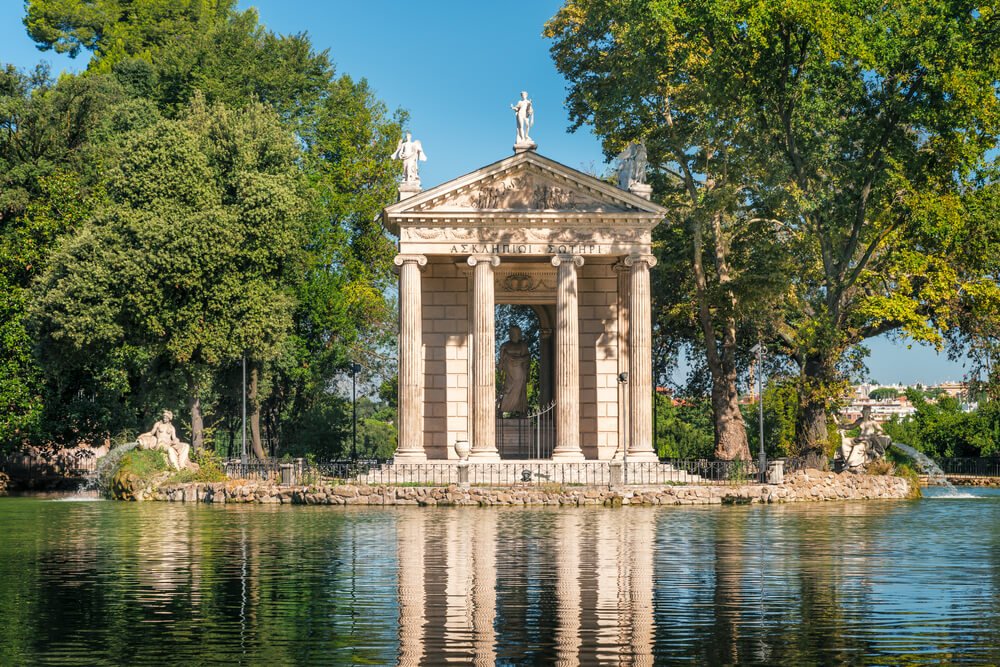
From some of the most famous Bernini and Canova sculptures to paintings by top-caliber artists like Caravaggio, Titian, and Raphael, you’ll get to admire up close some of the world’s most famous art pieces.
Whether you take a guided tour or explore at your own pace, it’s important to know what to expect on a visit to the Borghese Gallery (and how to make the most of it) — so we’ll cover the history of this villa and its most important masterpieces, the ticket options, and throw in a few extra tips to help you plan your visit.
Whether you’re visiting Rome for a day or three, visiting the Borghese Gallery is a must for art-lovers — this post will show you why!
Table of Contents
A Brief History of the Borghese Gallery
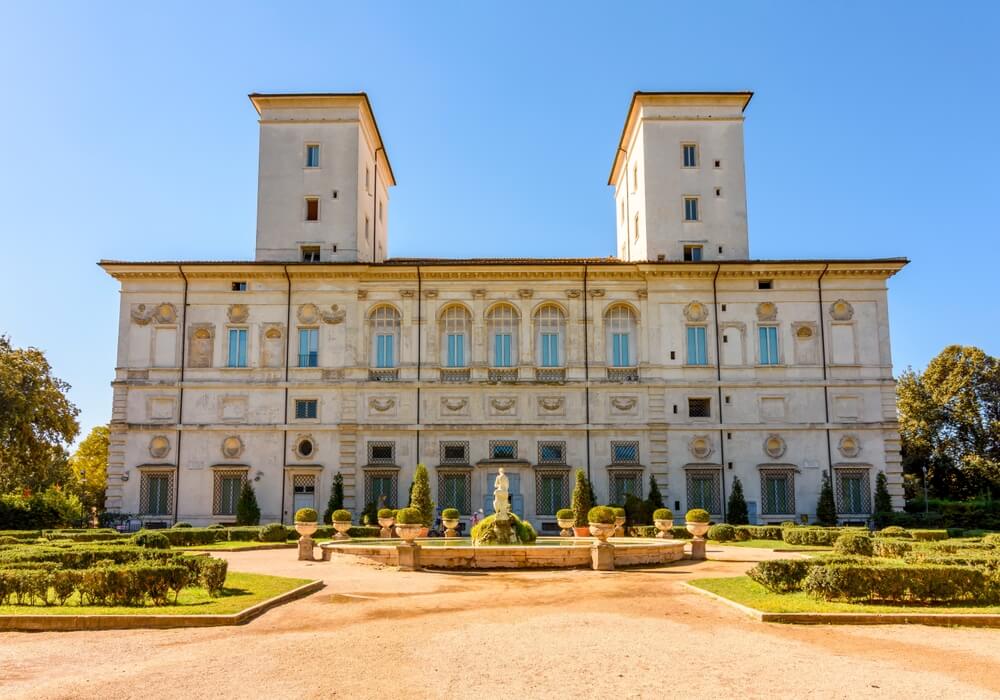
The Borghese family was a noble family from Siena who also wanted to plant some roots in Rome, so how else do you do that? By buying a bunch of land, of course.
This well-to-do family purchased the massive swath of land that would later become Villa Borghese Park, intending to build a palatial villa to house their collection of art.
But the villa being so ornate made it take quite a while for it to be built — the construction project of both the villa and the gardens went from 1606 to 1633, almost three decades.
As early as 1612, a collection of works belonging to Cardinal Scipione Borghese were transferred to the newly built villa.
The art collection grew over the decades with the addition of works collected from other family locations, new acquisitions, and even works completed especially for the Borghese family.
In 1770, Marcantonio IV Borghese ordered a complete renovation of the villa, which included decorations with polychrome marble and frescoes depicting the history of the Borghese family.
The collection continued to grow over the ages, with a huge acquisition in 1891. This is around the start time that the government started to try to negotiate with the family, hoping to turn the private villa into a state museum so all could enjoy the art.
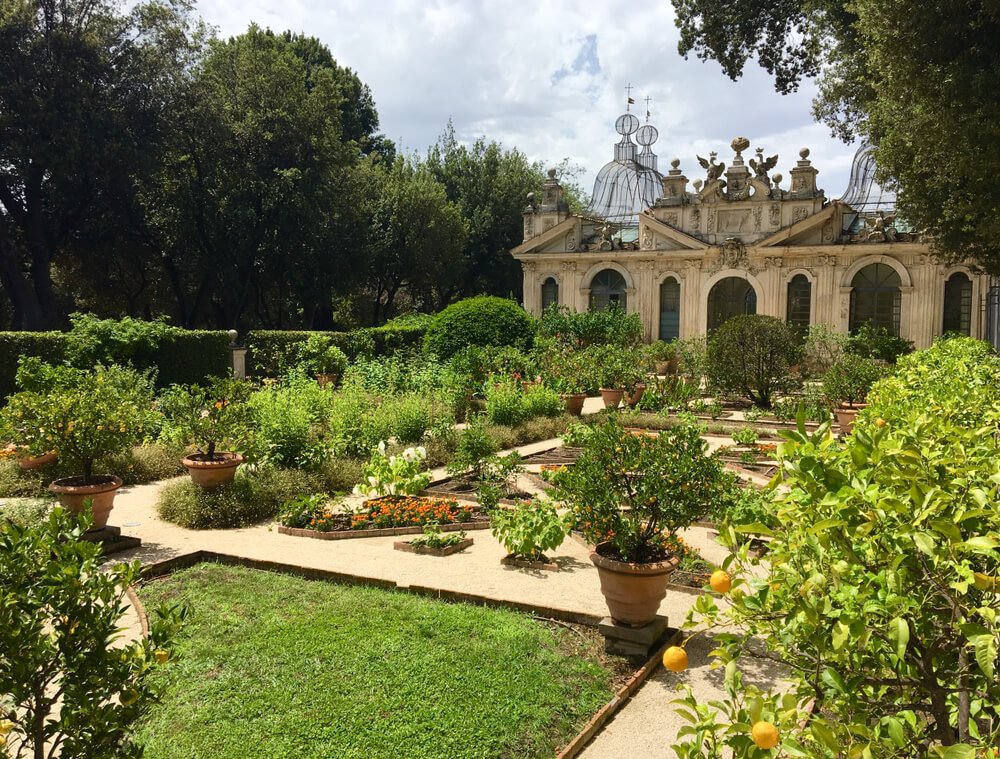
Negotiations were not easy, though, lasting a full decade before reaching an agreement. The purchase was considered the deal of the century, given the low price paid for the property, which included the villa and the entire surrounding park.
In 1902, the Villa Borghese Museum was formally inaugurated. In 1983, the museum closed for renovation to be reopened only 14 years later, in 1997.
Ever since the reopening, the world-famous Borghese Gallery has been drawing more and more visitors!
The Rooms and Masterpieces of the Borghese Gallery
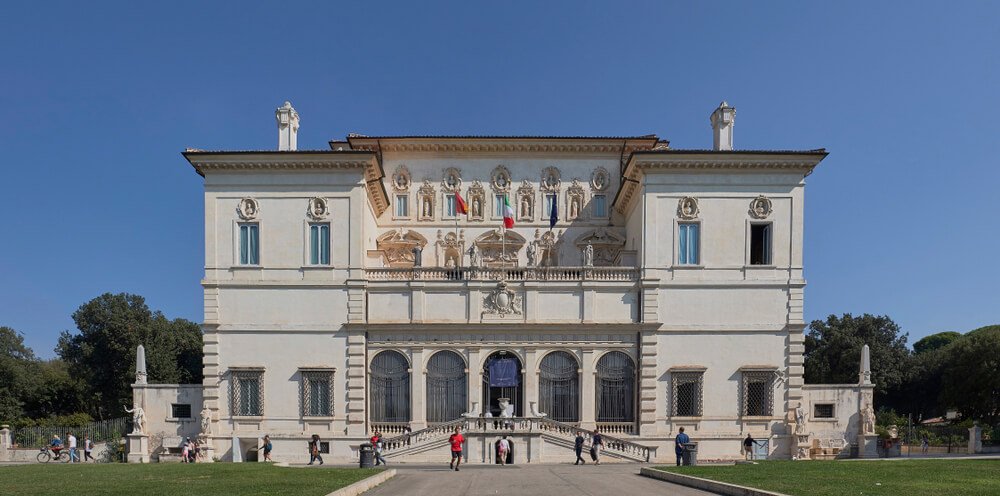
With over 20 rooms, the Borghese Gallery occupies two levels and displays impressive frescoes, paintings, sculptures, and other works of art.
Each room is carefully curated to explore a specific movement, theme, artist, or art school, and most display at least one work considered a masterpiece.
Here is a quick overview of the most important rooms and the masterpieces you absolutely can’t miss.
Don’t rush through and skip the other rooms though, as they house even more beautiful artwork.
Nevertheless, if you’re looking for the top of the top, the ones mentioned here are considered the most prestigious works inside the gallery.
Room 1: Paolina Room

In this room, you’ll see one of the most important sculptures in the gallery, Pauline Bonaparte as Venus Victrix.
Antonio Canova created the sculpture between 1805 and 1808 on the commission of Pauline Bonaparte’s husband, Camillo Borghese.
Upon its unveiling, the sculpture generated a fierce debate on whether Pauline Bonaparte posed naked for the sculpture.
According to certain sources, she confirmed the rumors, although it was unclear whether that was actually true or it was a calculated and provocative answer given to enhance her promiscuous reputation.
Of course, the room has more than just this famous sculpture to admire.
Among the other artworks, a particularly noteworthy one is the Group of Leda with the Swan and Eros.
Room 2: David Room
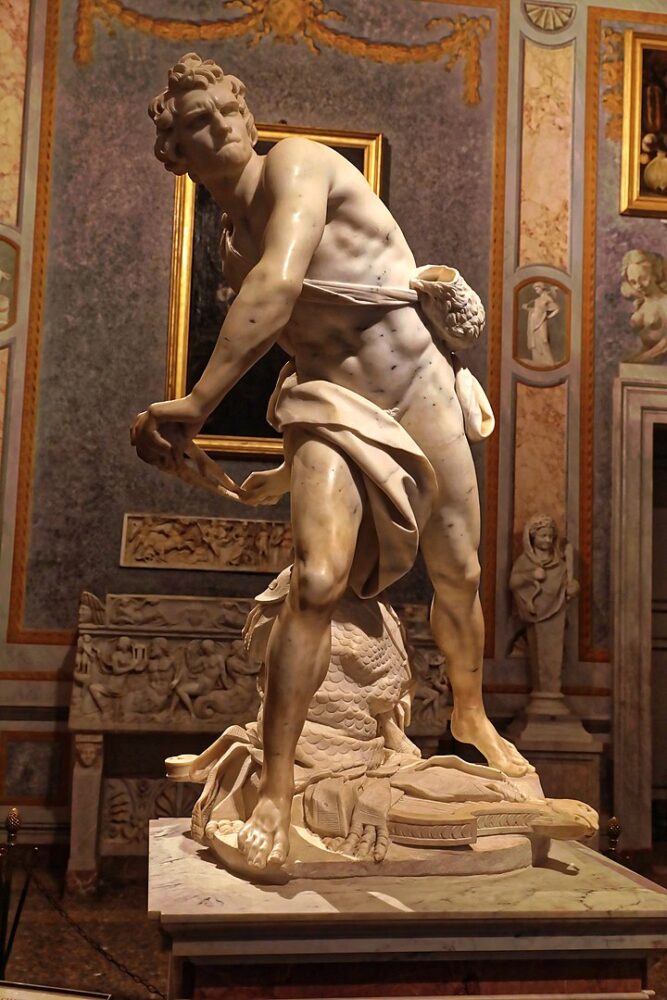
The room takes its name from the statue of David by Gian Lorenzo Bernini, dating to 1624.
Like Michelangelo’s famous sculpture of David in Florence, Bernini decided to depict the heroic figure in the moments just before the killing of the giant Goliath.
The sculpture is one of the most prestigious of the gallery, acclaimed for how Bernini represented the hero’s movement and the intensity of his frown as he stared down his enemy.
Room 3: Apollo and Daphne Room
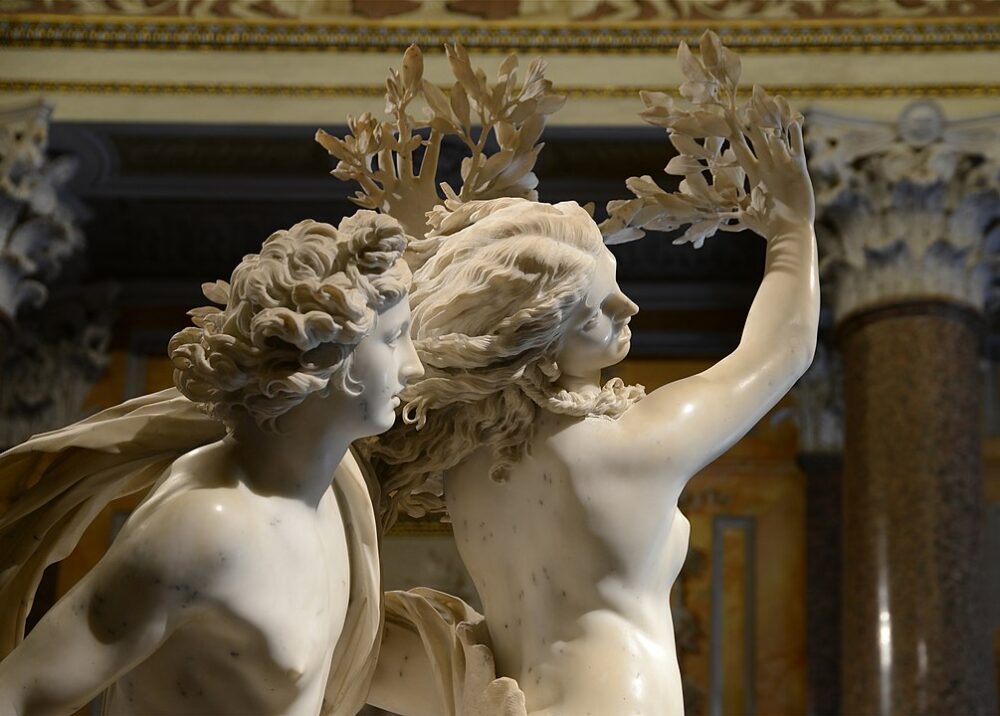
You will see two important artworks in this room, the Apollo and Daphne sculpture by Gian Lorenzo Bernini and the painting Melissa by Dosso Dossi.
Bernini created the Baroque life-size sculpture of Apollo and Daphne on a commission by Scipione Borghese in 1622.
The scene represents the moment from myth when Daphne was transformed into a laurel tree after praying for her body to change, since she was cursed by Cupid and could not reciprocate Apollo’s love.
Room 4: Room of the Emperors
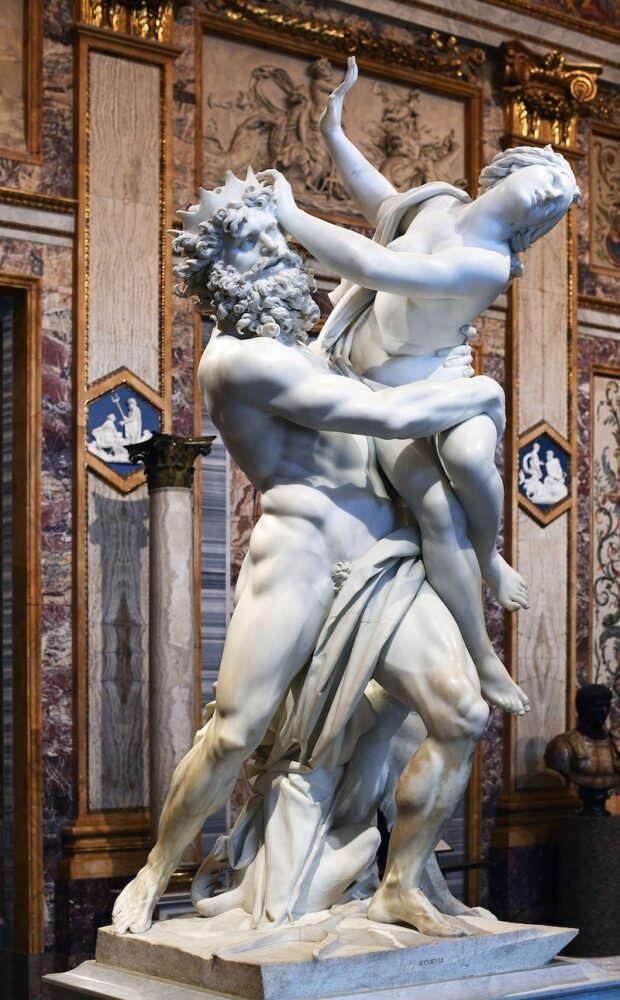
In this room, you’ll see the most famous sculpture in the entire gallery and one of the several masterpieces, the R*pe of Proserpina by Gian Lorenzo Bernini.
The sculpture is famous for its stunning details, such as Pluto’s fingers sinking into Proserpina’s thigh, an unbelievably realistic representation of human bodies, and famously difficult to reproduce in marble.
Another unique feature of the sculpture is the ability to admire the entire scene from a single viewpoint, which offers a clear view of both Pluto’s and Proserpina’s faces.
Room 5: Hermaphrodite Room
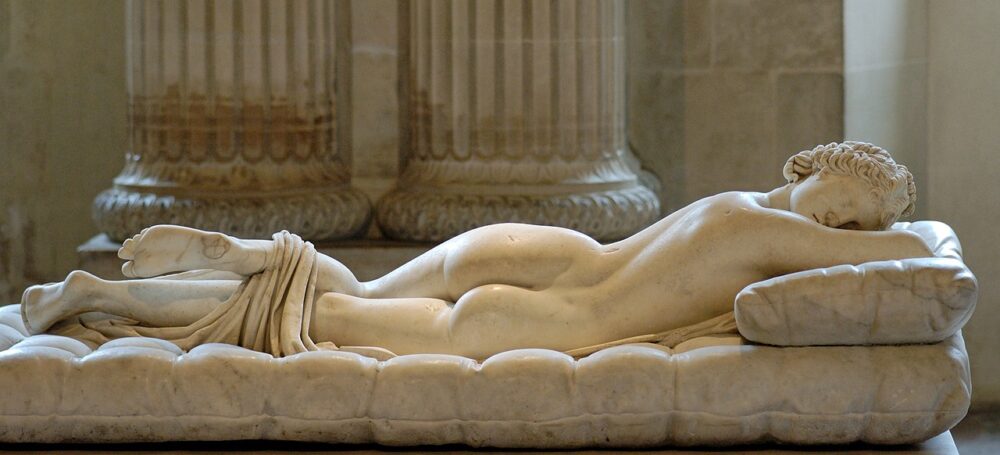
The room’s name comes from the most prominent sculpture housed here, Sleeping Hermaphroditus.
The sculpture replaced another version that is now in the Louvre Museums after being acquired in 1807.
The Hermaphrodite sculpture currently on display in the Borghese Gallery was retrieved in 1781, and dates back to the 2nd century CE
Room 6: Aeneas and Anchises Room
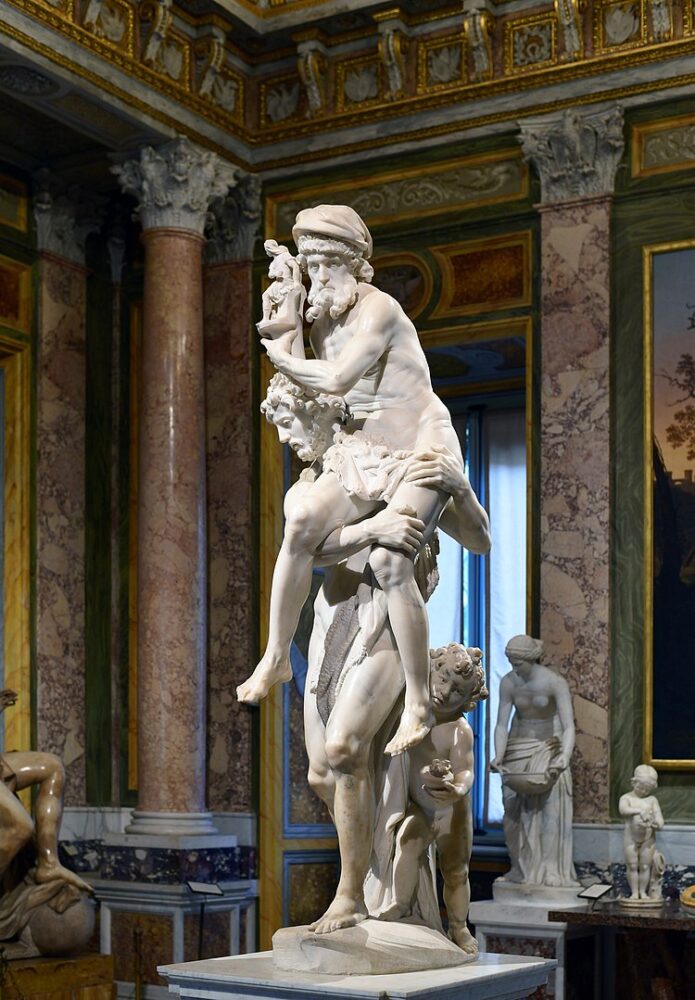
The masterpiece housed in this room is Bernini’s Truth Unveiled by Time, although the room is named for his other sculpture, Aeneas, Anchises, and Ascanius.
Truth Unveiled by Time depicts an allegorical figure of Truth as a naked woman.
Bernini originally intended to include the figure of Time, but never completed that portion, so the sculpture remained somehow incomplete.
The sculpture of Aeneas, Anchises, and Ascanius depicts a famous scene from the Aeneid in which the hero Aeneas carries his father, Anchises, away from Troy. Aeneas’ son, Ascanius, follows them.
Room 8: Silenus Room
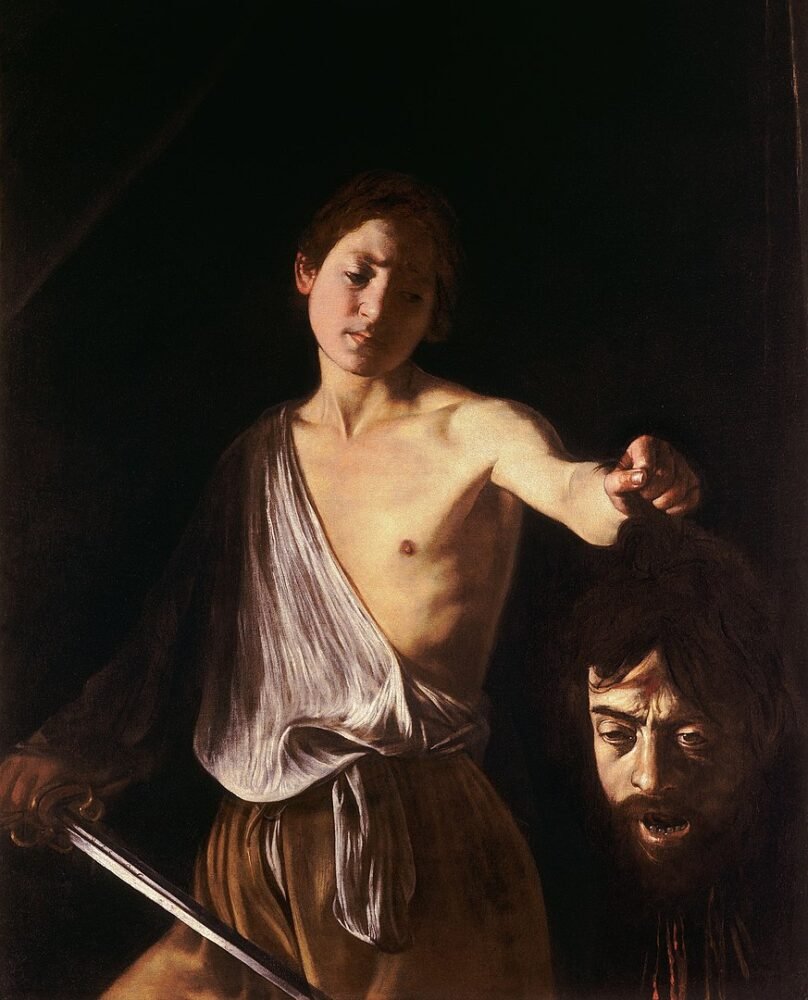
The last room on the ground floor houses six of the twelve Caravaggio paintings owned by Cardinal Scipione Borghese.
The most noteworthy ones are David with the Head of Goliath, Saint Jerome, Boy with Basket of Fruit, and Self-portrait as Bacchus.
The room also houses paintings by other artists like Spagnoletto, Baburen van Dirk, and Cavalier d’Arpino, along with Roman sculptures like the Dancing Satyr.
Room 9: Dido Room
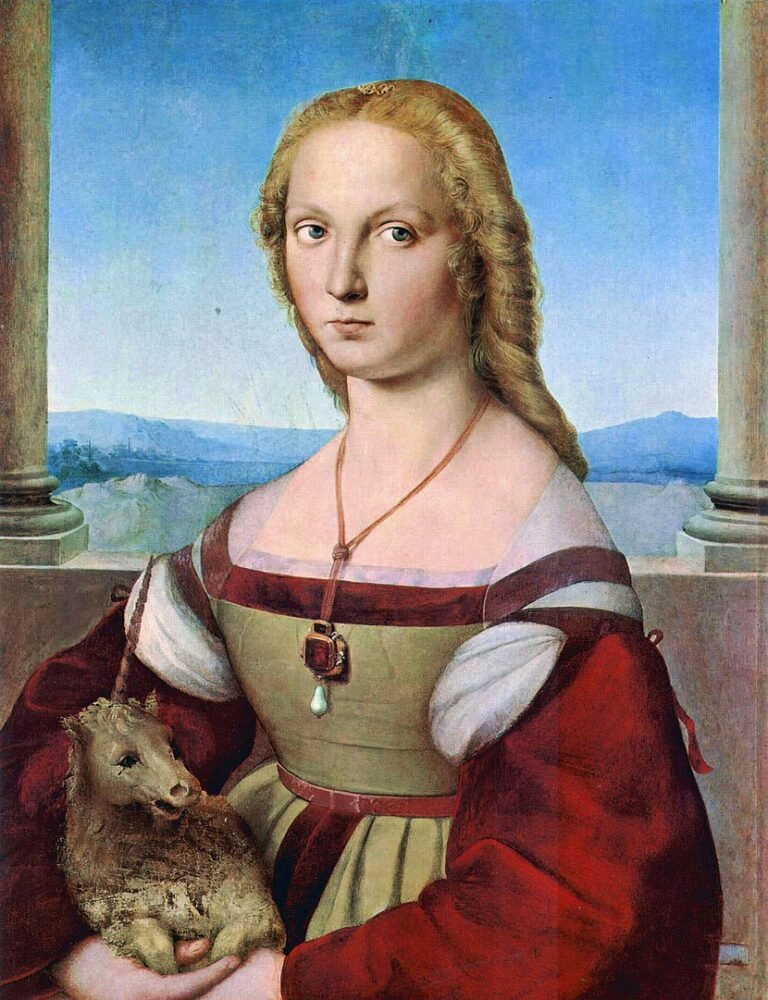
Though it is primarilly dedicated to three masterpieces by Raphael, the room also features gorgeous paintings by Perugino, Botticelli, Ghirlandaio, and Andrea del Sarto.
The three Raphael paintings on display are Deposition, Portrait of a Man, and Lady With Unicorn.
Room 10: Hercules Room
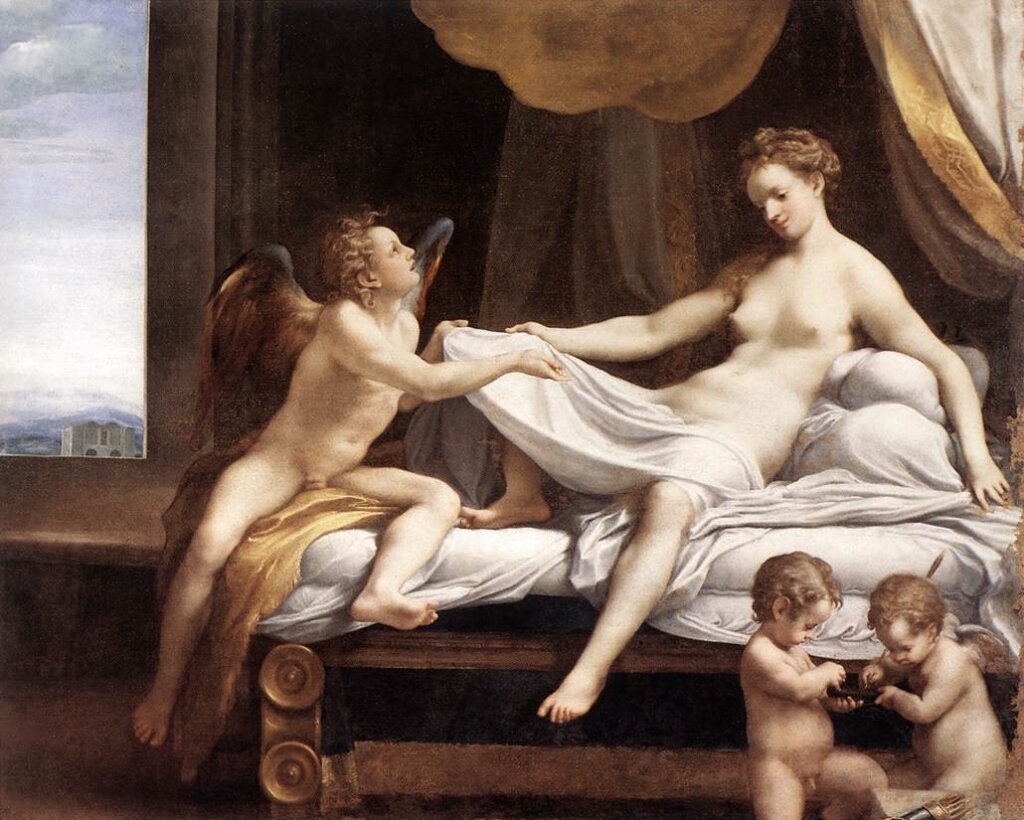
Alongside beautiful 15th-century paintings, many of them depicting Venus, you’ll get to admire the masterpiece of this room, the oil painting Danae by Correggio.
The painting was initially created around 1532 for the Renaissance palazzo Te in Mantova, but has had quite the history of travel!
After being moved to Spain, the painting was moved to Milan. Before being acquired by Camillo Borghese in 1827, Danae passed through several owners in Prague, Stockholm, France, and England.
Room 14: Lanfranco Loggia
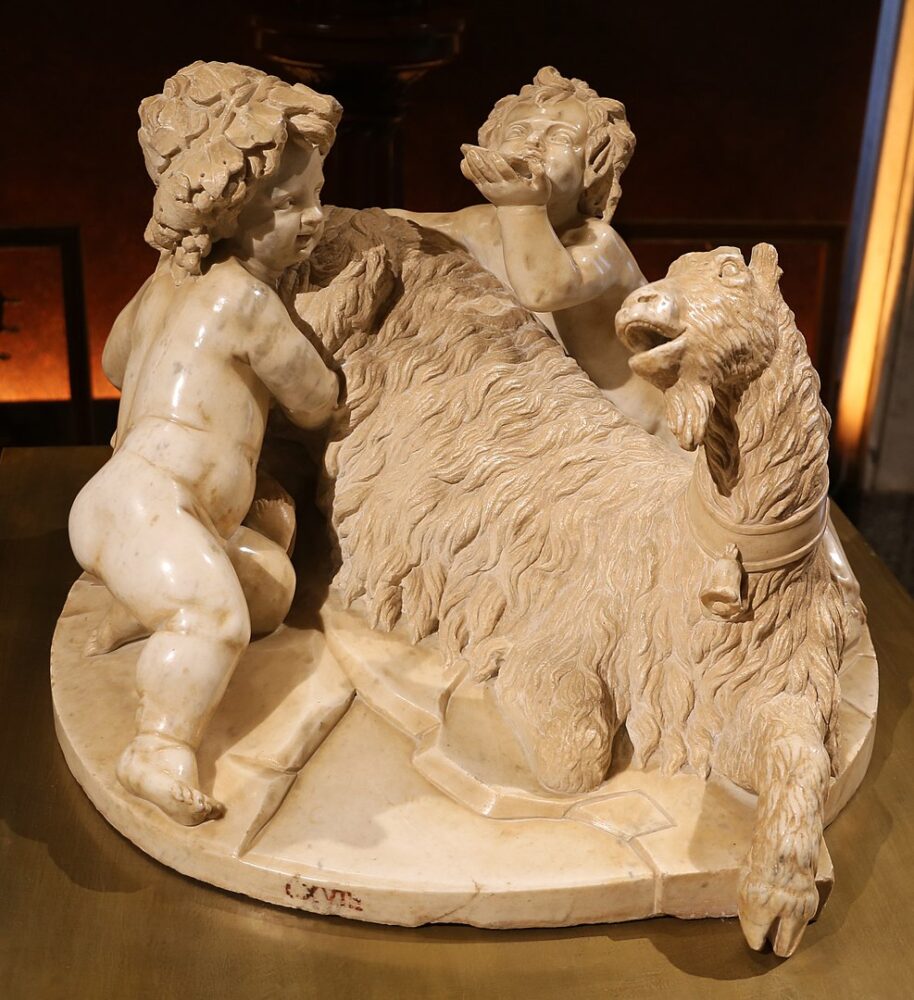
This room features two busts of Cardinal Scipione Borghese sculpted by Gian Lorenzo Bernini, along with a bust of Pope Paul V and the sculpture The Goat Amalthea with the Infant Jupiter and a Faun.
The latter is the artist’s earliest work, completed when he was still a teenager, sometime between 1609 and 1615.
Room 18: Jupiter and Antiope Room
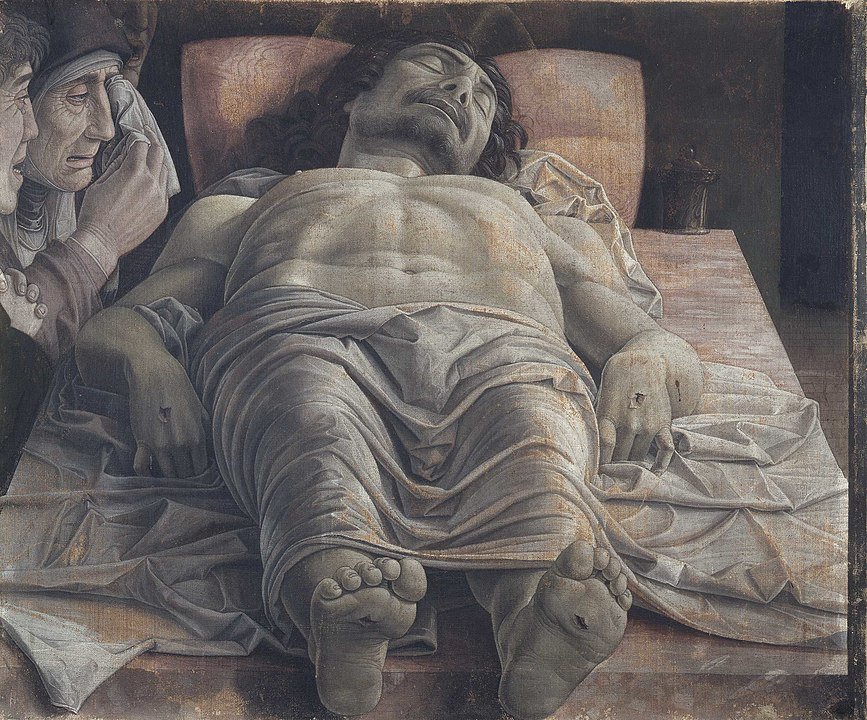
The most important painting in this room is Lamentation over the Dead Christ by Rubens.
Another work by Rubens, Susanna and the Elders has been temporarily removed, but it may be back on display by the time you visit.
The interesting fact about the first painting is that it was initially attributed to Antoon Van Dyck and only later identified as a work by Rubens.
Room 19: Helen and Paris Room

The room was one of the most beautiful during the 19th century when it featured the statue of Paulina Bonaparte as Venus Victrix from 1838 to 1881.
Nowadays, the most noteworthy pieces are two paintings by Domenichino, The Hunt of Diana and Sibyl.
Domenichino painted The Hunt of Diana for Cardinal Aldobrandini.
However, Cardinal Scipione Borghese, a bitter rival of Aldobrandini, wanted it for himself, so he took it by force from Domenichino’s study to add to the Borghese collection!
Room 20: Psyche Room
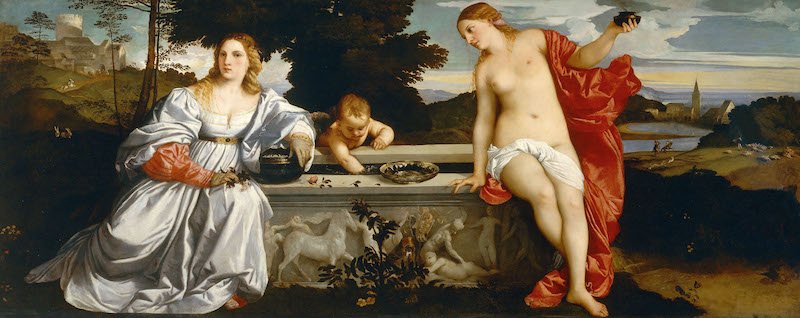
The room houses one of Titian’s early paintings, Sacred and Profane Love, representing two figures who appear like the same woman, one dressed as a bride and the other nude.
Between them, there is the figure of a winged boy, most likely representing Cupid.
Scholars have long debated the meaning behind the painting and the identity of the two women. The most widespread theory is that they represent the dual nature of Venus.
The room displays other paintings by Titian alongside works by Paolo Veronese, Giovanni Bellini, and others.
Other Sights Not to Miss
Beyond the mentioned rooms, you shouldn’t miss the Mariano Rossi Hall and the chapel, as well as the vestibule, all which house Roman art.
You’ll find inscriptions, sculptures, and even sarcophaguses here!
You’ll also find paintings by Canaletto, Veronese, Cavalier d’Arpino, Federico Zuccari, Battistello, and Giulio Romano, just to mention a few.
Borghese Gallery Ticket Options
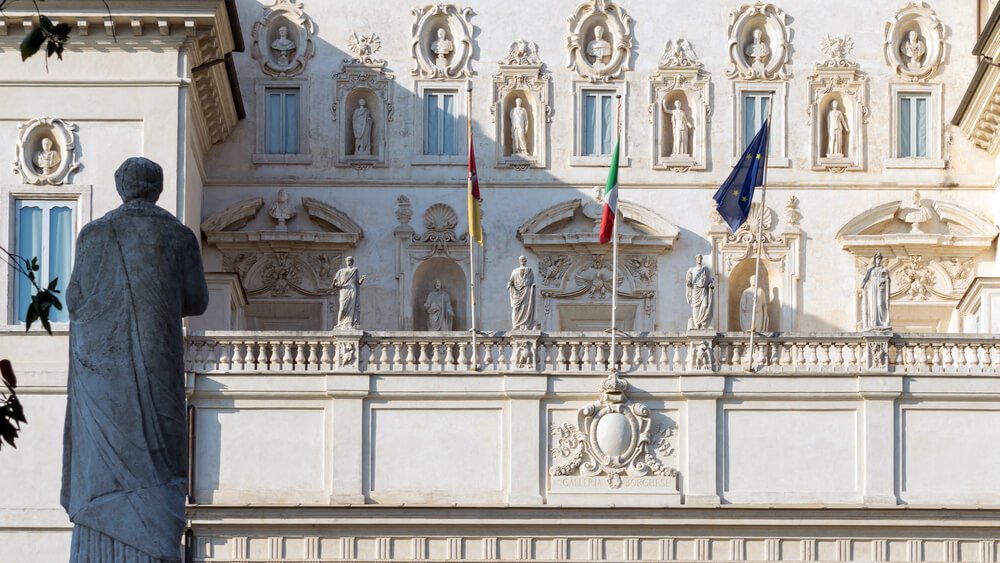
If you’re only interested in visiting the museum on your own, the best option is to book a time slot on the official website.
Entry is scheduled every two hours once the museum opens, and each slot allows you a two-hour visit.
Book your ticket a few days in advance, and be sure to show up on time!
Otherwise, there are a few other options (and you might want to do one of these anyway if you want a tour of the Borghese Gallery).
Option One: Borghese Gallery Ticket with Escorted Entrance
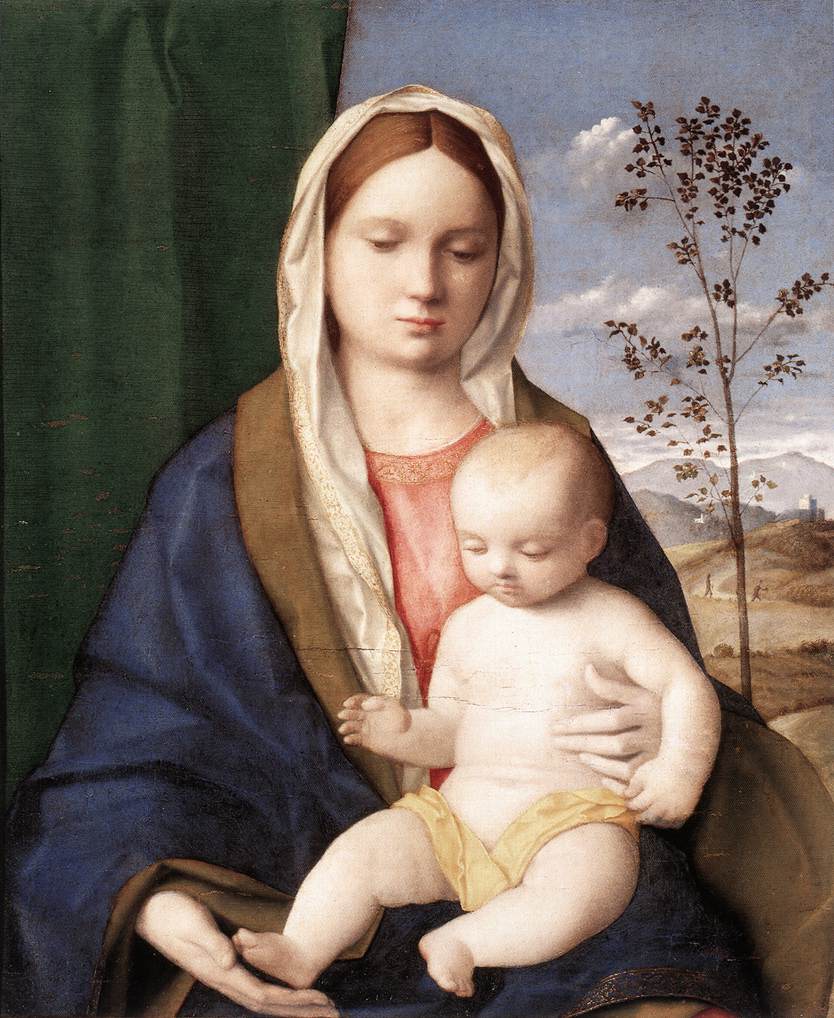
If the tickets on the official website are sold out, you may have better luck with this Borghese Gallery Ticket with Escorted Entrance.
This option is also great if you want fast-track entry to the gallery.
You can also add an optional audio guide available in English, Italian, and French to enrich your museum experience.
Option Two: Borghese Gallery Masterpieces & Gardens: Skip-the-Line Tour
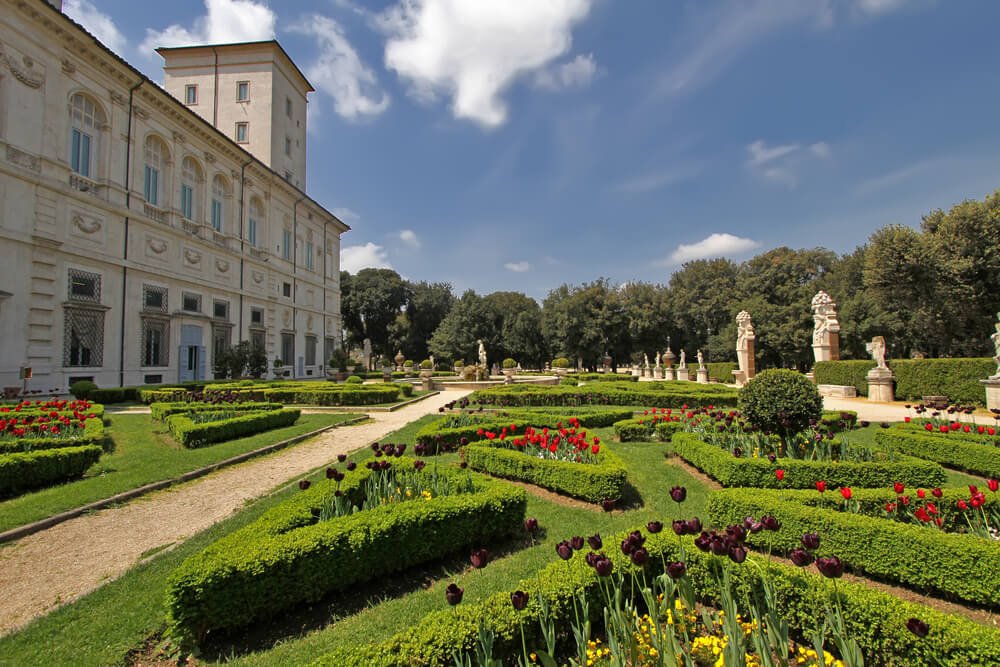
If you prefer the added depth of information that comes from a guided tour, this Borghese Gallery Masterpieces & Gardens: Skip-the-Line Tour is the perfect option.
Together with the skip-the-line entry to the gallery, you get an expert guide to tell you cool facts about the artwork, as well as a walking tour around the Borghese Garden, once Cardinal Borghese’s private park.
Option Three: Roma Pass: 48 or 72-Hour City Card
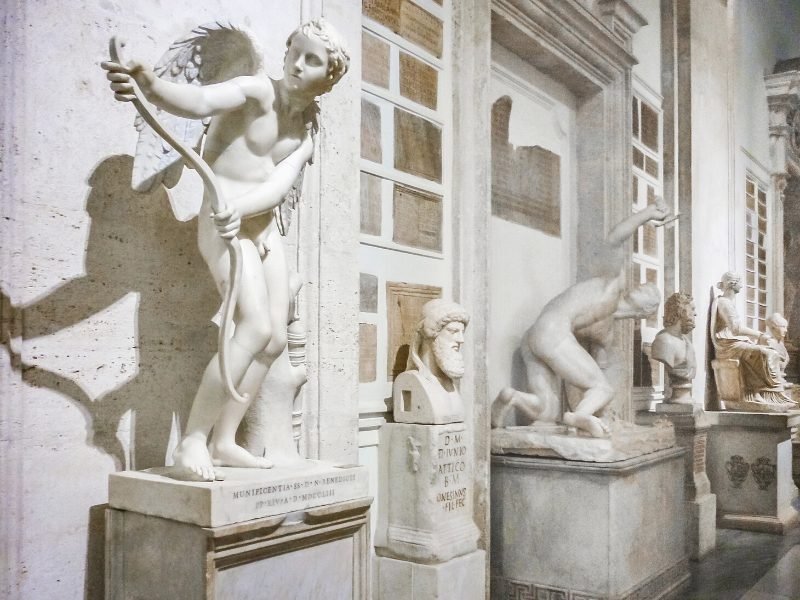
Another great option is getting a Roma Pass: 48 or 72-Hour City Card, which includes free skip-the-line entry to one or two attractions of your choice, free public transport, and lots of discounts on other activities.
You can choose between more than 45 monuments, museums, and archaeological sites to visit with the pass, the first one for free and the following ones at a discounted price.
Tips for Visiting the Borghese Gallery
Before booking your tickets for the Borghese Gallery, here are a few tips to prepare for your visit and avoid any inconveniences.
Book your tickets online in advance.
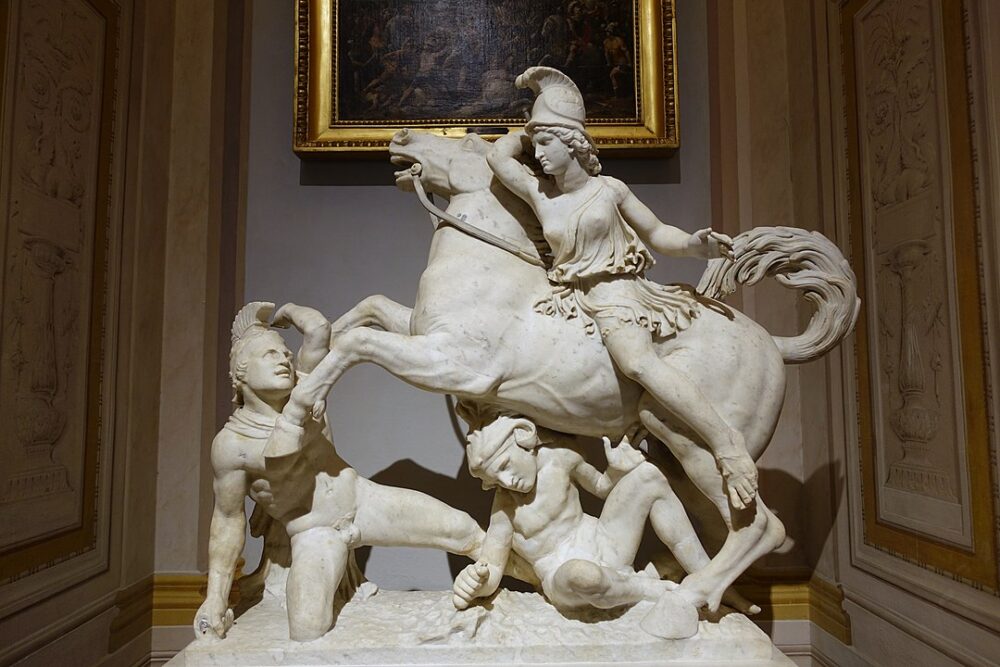
The most important tip for visiting the Borghese Gallery is to book your tickets in advance.
Entry is only possible with a reserved time slot, and they sell out fast.
Even during the slow season, finding tickets less than a couple of days in advance can be challenging, and you may not have many choices of available time slots.
To avoid missing out on this amazing museum, be sure to book either a regular entry ticket or a guided tour a few days before the visit.
In the peak season, book at least a week in advance.
Be aware of prohibited items.

Visitors to the museum are limited to carrying a small bag (max. 21×15 cm, or 8×6 in).
This means that, if you have larger backpacks or bags, you’llneed to leave them in the coat check.
You will also be asked to deposit objects such as selfie sticks or umbrellas.
Furthermore, you won’t be allowed to enter with any food and drinks, including water, which must be left in the coat check as well.
Check closing days in advance.
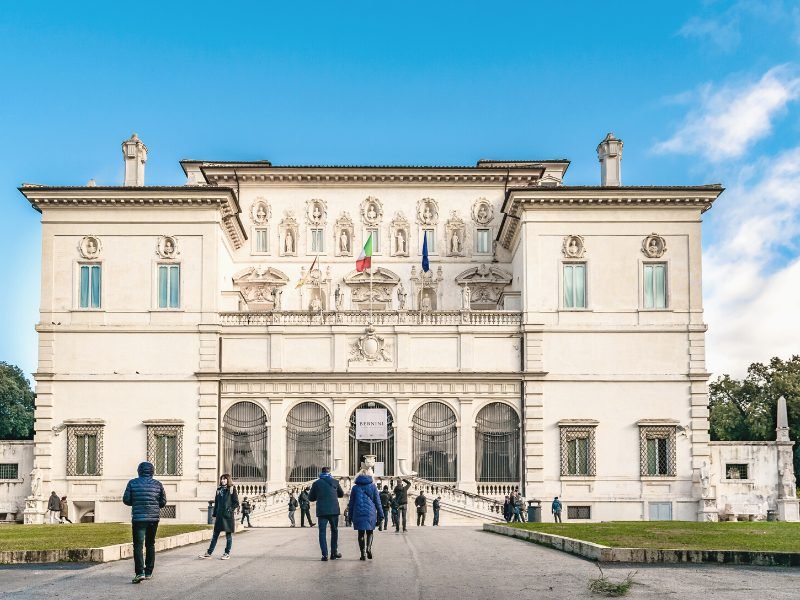
Usually, the museum is closed every Monday and on the 1st of January and 25th of December. However, these dates may change on special occasions.
If a holiday falls on a Monday, the museum may postpone the weekly closing day to a different day.
The museum’s website contains all the relevant information, so be sure to check it out when planning your visit.
Consider joining a guided visit.
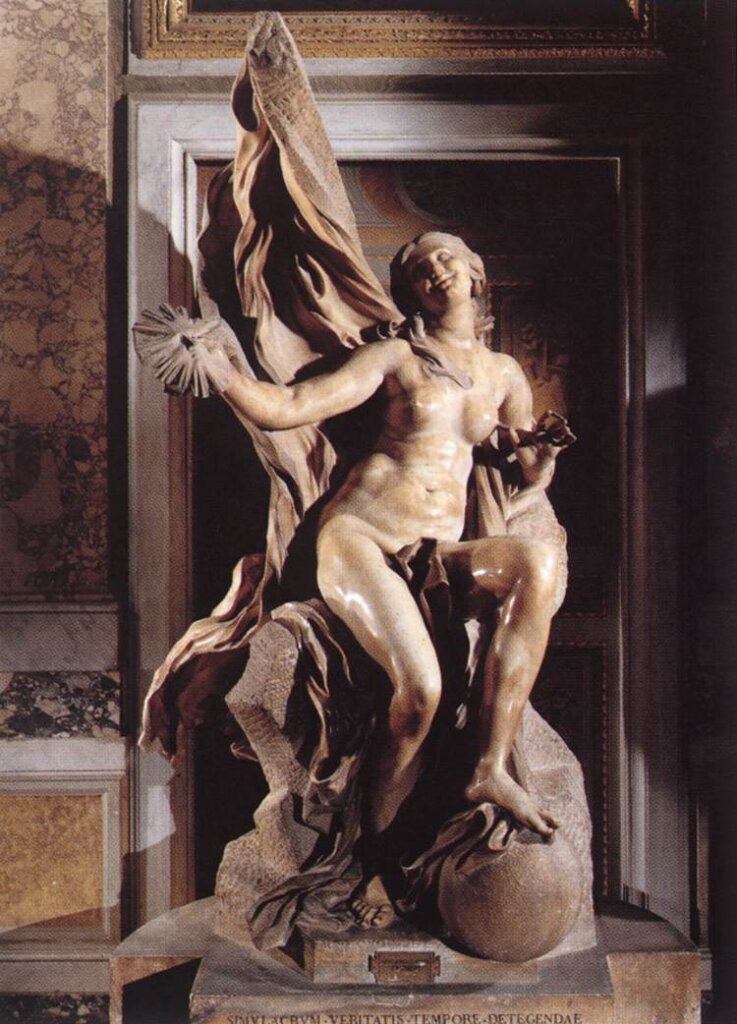
Visiting the museum on your own allows you the freedom to enjoy whichever works you want at your own pace.
However, if you’re interested in learning more about the most important artworks, a guided tour is the perfect way to get that extra insight into the museum.
Pick up an audio guide.
If you don’t want to join a guided tour but would still like to learn some interesting facts about the works you’re admiring, why not pick up an audio guide?
This flexible option has a lower price tag than the guided tour, and it gives you the freedom to only listen to the things you are interested in.
There’s a dedicated counter in the museum where you can buy audio guides before starting your visit.
***
This short guide should have you covered for your visit to the Borghese Gallery. Now, go ahead and start planning your next Roman holiday!

Roxana is a Romanian-born freelance travel writer who has lived in Italy for over 15 years. She has a Master’s in Journalism and a Bachelor’s in Film Studies, and she studied at Università degli Studi di Roma Tre. Besides her native Romania, Roxana has lived in Rome, Lisbon, and Berlin, and she has traveled through much of Europe in search of hidden gems, history, and culture.